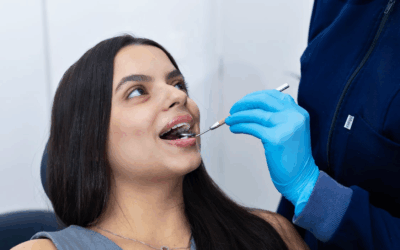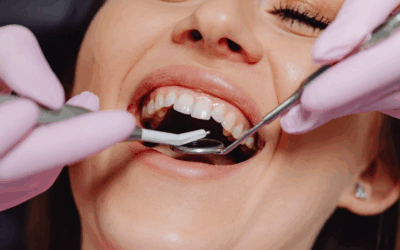If you’ve been told you need gum surgery, it’s normal to wonder about pain. The short answer: you should not feel sharp pain during the procedure, and most people describe manageable discomfort afterward that improves over a few days. At Dental Implants and Periodontal Health of Rochester, we plan your care so you know exactly what to expect: before, during, and after treatment.
What you’ll feel during surgery
Gum surgery is done with local anesthesia to fully numb the area. You may notice pressure, vibration, or tugging, but not pain. If you tend to be anxious, inform us so that we can discuss calming options and additional comfort measures to help you stay relaxed and in control throughout.
How painful is it afterward?
Sensitivity depends on the procedure and your personal healing, but most people describe the first 24–72 hours as mild to moderate tenderness near the site. If a small piece of tissue was borrowed from the palate for a graft, the donor spot can feel like a scraped knee for a few days. Discomfort usually peaks in the first two days and then settles. We’ll give you a simple pain-control plan and clear instructions. A study reports patients experience more pain after gum surgery, swelling and bruising when their surgery duration was 60 min or longer.[1]
What helps the most with comfort
- Take medication exactly as directed. Start the first dose on schedule, don’t “wait for pain.”
- Ice the area (outside the face) on the day of surgery (short intervals). Switch to warmth after 48 hours if you feel stiffness.
- Choose soft, cool foods at first (yogurt, smoothies with a spoon, mashed foods). Avoid hot, spicy, or crunchy items until we say it’s okay.
- Sleep slightly elevated the first couple of nights to reduce swelling.
- Skip smoking and strenuous workouts while the site is healing, both of which tend to slow down recovery.
Brushing, flossing, and rinsing
You’ll go home with written steps tailored to your procedure. In general:
- Keep your mouth clean, but be gentle near the surgical site until we clear you to brush there.
- Brush the other areas as usual: about 2–4 minutes, twice a day.
- Clean between teeth twice daily (avoid the surgical site if we’ve asked you to).
- If a rinse is recommended, use it as instructed, no vigorous swishing or spitting on day one.
Normal vs. not normal
A little oozing or pink saliva can be normal the first day. Call us if you notice bleeding that doesn’t slow with gentle pressure, worsening swelling after day three, fever, or anything that just doesn’t feel right. We want you to be comfortable and healing on track.
Does the type of gum surgery change recovery?
Yes, a bit:
- Gum reshaping/contouring (gingivectomy/gingivoplasty): Often the quickest recovery; tenderness is usually mild and short-lived.
- Esthetic crown lengthening: You’ll feel some tenderness in the gum and nearby area; most people return to normal routines quickly with simple precautions.
- Soft-tissue grafts: Expect a little extra tenderness, especially if a donor site was used. We’ll show you how to protect it while it heals.
How we keep you comfortable at our Rochester office
Before we begin, we double-check numbness and talk through each step so there are no surprises. During the procedure, you can signal for a pause anytime. Before you leave, you’ll have clear, written after-care instructions and a direct line if questions pop up at home. Follow-up visits are scheduled so we can monitor healing and keep you comfortable.
Healing, Made Easier
Gum surgery shouldn’t feel scary or mysterious. With thorough numbing and a clear home-care plan, most people do very well and enjoy healthier, stronger gums that make daily care easier.
📞 Give us a call at 585-685-2005 to set up a visit, or reach out online to get started. We’ll help you feel confident eating, speaking, and smiling again.
Source:



